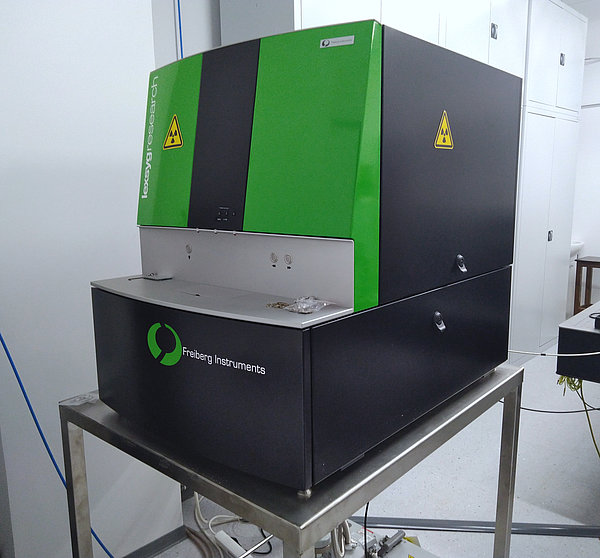Category
Materials characterization; Spectroscopy methods and lasers
Manufacturer and Model
Freiberg instruments - Lexsygresearch LMS
Specifications
Radiation sources:
- X-rays (up to 2 Gy/s)
- Beta radiation (55 mGy/s)
- UV laser (263 nm)
- Detectors: CCD (for x-rays); PMT or CCD (beta and UV)
Samples:
- Object - diameter below 8 mm, thickness below 1.5 mm
- Tablet - diameter 10 mm, thickness below 1.6 mm
- Powder
- Up to 80 samples can be loaded, their manipulation is automated
Applications and capabilities
The main function of this tool is defect analysis from multiple physical phenomena:
- Thermostimulated luminescence (TSL), provides information about defect recombination processes;
- Optically stimulated luminescence (OSL), provides information on defect recombination processes;
- Cathodluminescence (CL), provides information on defect formation and radiated beta radiation;
- X-ray luminescence (XRL), provides information on defect formation and recombination processes
In the tool samples can be irradiated with x-rays (up to 2 Gy/s), beta radiation (55 mGy/s) and a UV laser (263 nm). Tool is fully automated thus long and complex experiments can be easily carried out such as full day and night irradiation, fractional TSL, etc.
Up to 80 samples can be loaded into the tool. All samples are being measured in practically identical conditions and following a specified sequence. This ensures that 80 sample measurements are carried out as easily as one sample measurement.
3 sample types are possible:
- Object with a diameter below 8 mm and thickness below 1.5 mm
- Tablet with a diameter 10 mm and thickness below 1.6 mm (it is important that the tablet does not crumble and is sturdy enough that a robotic arm is able to pick it up and transport it)
- Powder - more complicated and requires more preparation time but not impossible
Tool has provided a great contribution to thermoluminescence measurements in project LZP-2018/10361 in which new dosimetric materials are investigated or existing ones are improved. We also have experience in XRL luminescence measurements for thin films used as x-ray detectors as well as TSL measurements for persistent luminescent materials.
